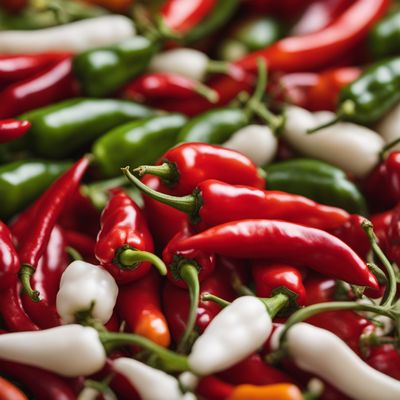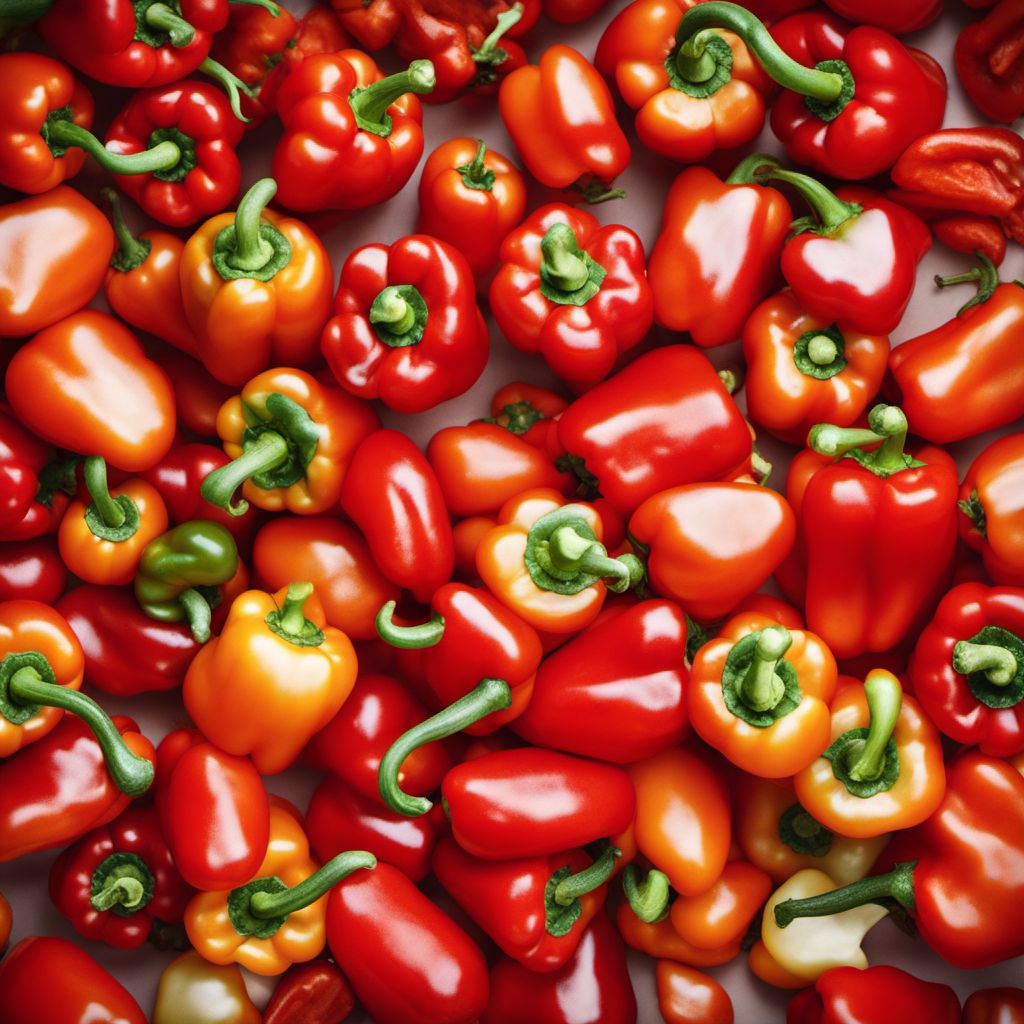
Ingredient
Sweet peppers
The Colorful Capsicum
Sweet peppers come in a variety of colors, including red, yellow, orange, and green. They have a crisp texture and a sweet, slightly tangy flavor. Their hollow interior makes them perfect for stuffing or adding to salads, stir-fries, and sandwiches.
Origins and history
Sweet peppers are native to Central and South America, where they have been cultivated for thousands of years. They were introduced to Europe by Christopher Columbus and quickly became popular in Mediterranean cuisine. Today, they are grown worldwide and are an essential ingredient in many global cuisines.
Nutritional information
Sweet peppers are low in calories and rich in vitamins A and C. They also contain dietary fiber and antioxidants that promote overall health. The different colors of sweet peppers indicate varying levels of ripeness and nutritional content, with red peppers being the ripest and highest in nutrients.
Allergens
Sweet peppers are not known to be allergenic and are generally well-tolerated by most individuals.
How to select
Choose sweet peppers that are firm, glossy, and free from blemishes or soft spots. The skin should be taut and vibrant in color. Avoid peppers with wrinkled or shriveled skin, as they indicate age or dehydration. Opt for organically grown peppers to minimize exposure to pesticides.
Storage recommendations
Store sweet peppers in the refrigerator, preferably in a perforated plastic bag to maintain their freshness. They can be stored for up to a week. Avoid washing them until ready to use, as moisture can accelerate spoilage.
How to produce
Sweet peppers can be easily grown in home gardens or containers. They require a sunny location, well-drained soil, and regular watering. Start seeds indoors and transplant the seedlings outdoors once the risk of frost has passed. Harvest the peppers when they reach the desired size and color.
Preparation tips
Sweet peppers can be enjoyed raw in salads, sliced and sautéed for stir-fries, roasted and stuffed with various fillings, or grilled for a smoky flavor. They can also be pickled or used as a topping for pizzas and sandwiches. Remove the seeds and white pith before using to reduce bitterness.
Culinary uses
Sweet peppers are incredibly versatile and can be used in a wide range of dishes. They are commonly used in Mediterranean cuisine, such as in dishes like stuffed peppers, ratatouille, and roasted vegetable medleys. They are also a key ingredient in Mexican cuisine, where they are used in salsas, fajitas, and enchiladas.
Availability
Sweet peppers are cultivated and consumed worldwide. They are readily available in grocery stores, supermarkets, and farmers markets throughout the year.
More ingredients from this category
Recipes using Sweet peppers » Browse all

Tex-Mex Folar de Chaves
Spicy Tex-Mex Folar: A Fusion of Flavors
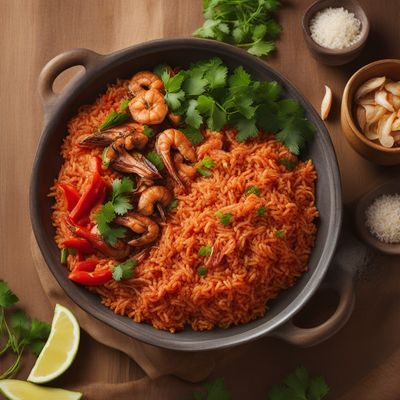
Sierra Leonean Jollof Rice with Seafood
Spiced Delight: Sierra Leonean Jollof Rice Infused with Fresh Seafood

Valencian-style Vrtanj
Savory Valencian Delight: A Twist on Vrtanj
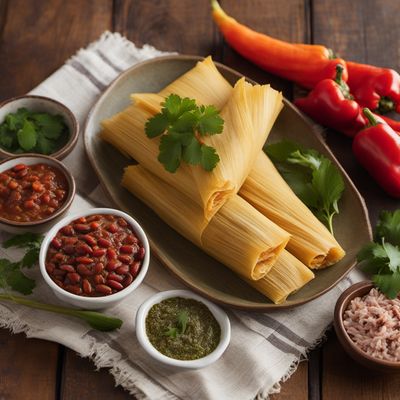
Tamales Pisques
Savory Salvadoran Corn Tamales with a Flavorful Twist

East African Moksi-Alesi
Savory Fusion: East African Moksi-Alesi Delight
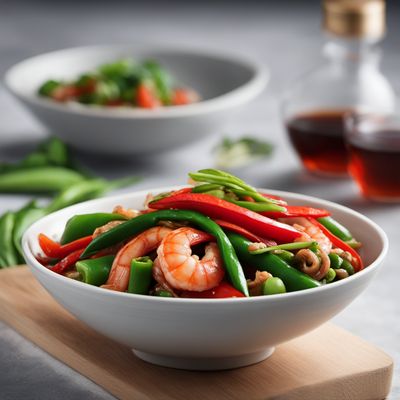
Uraró-inspired Shrimp and Vegetable Stir-Fry
Savory Liaoning-style Stir-Fried Shrimp with Fresh Vegetables
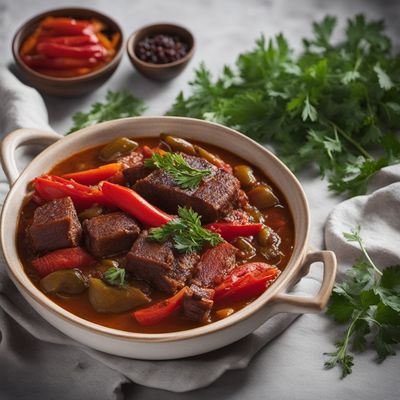
Basque-style Venison Stew
Txakoli-infused Venison Stew: A Basque Delight
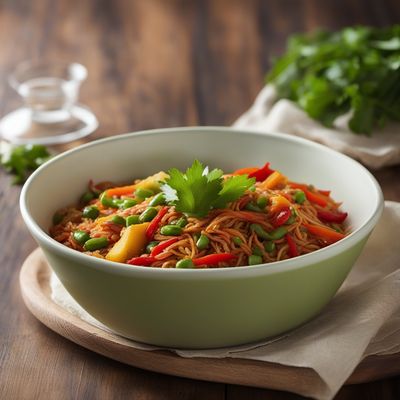
Phat Phak Khom Dominican Style
Tropical Veggie Stir-Fry: A Dominican Twist on Phat Phak Khom

Greek Spetsofai with Feta Cheese
Mediterranean Delight: Spetsofai - A Greek Sausage and Pepper Stew

Dorset-style Roasted Red Pepper Relish
Savory Delight: Dorset's Roasted Red Pepper Relish

Janjetina ispod peke (Hungarian Style)
Hungarian-Inspired Roasted Lamb

Honduran-style Spicy Beef Stew
Savory Honduran Beef Delight
